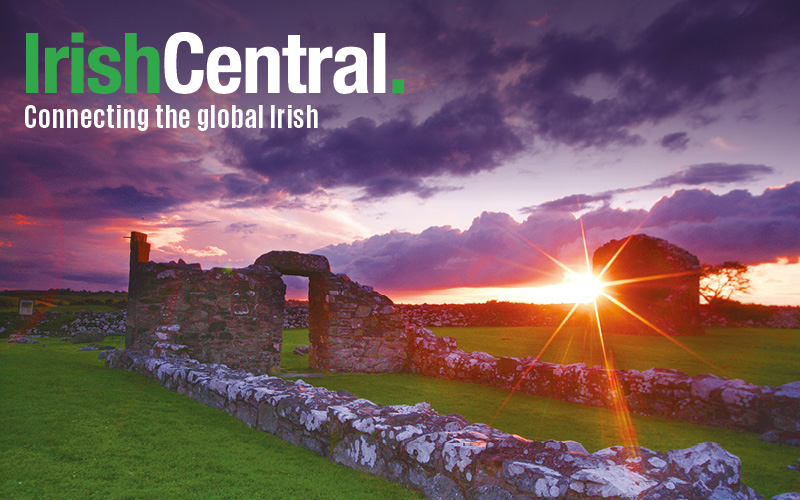The names and remarkable lives of a group of set dancers captured by a camera at a crossroads in Ireland over 100 years ago have been revealed thanks to the evidence of a 91-year-old man shortly before he died.
The photo is regularly spotted in bars, restaurants, and private homes across Ireland and has become symbolic of how rural communities celebrated life in the ‘old’ Ireland of the time. For all that, very little has been known about those who feature in the photo, while various counties have laid claim to its location.
The testimony reveals a family and a community of staunch republicans some of whom would later participate actively in Dublin’s Easter Rising. Two of the dancers also participated in Ireland’s first-ever official camogie match.
Retired CIE worker Manus O’Brien, who passed away in 2017, divulged the identities of over half the figures in the picture while conversing with his relations Jim O’Malley and Richard Pardi, both of whom are retired schoolteachers. The Cork man pointed out his own mother Abina, (Gobnait) as a young girl in the photograph.
Manus confirmed that the photo was taken at his birthplace, Knockmonlea, midway between Youghal and Killeagh in east Cork. The landscape remains almost unchanged to this day, though in truth it is more of a junction than a standard crossroads.
Manus’s information enabled his relatives, assisted by Knockmonlea resident Billy McCarthy, to align several of the dancers with nationalist organizations and active roles in the Easter Rising. Two of them also played in Ireland’s first official camogie match.
The photograph was taken by the renowned Horgan brothers of Youghal, pioneers of film and photography at the time the photo was taken, circa 1910.
Peg Barry, (nee Foley) another relative and a sprightly nonagenarian, recalls Knockmonlea as a bustling community with a forge and other small businesses in the early 1900s. “Dances were held at the crossroads on Sunday afternoons during summertime”, she recalls.
Although Manus didn’t say as much, Jim considers the scene to have been “deliberately posed, given the absence of a wooden platform as would be prerequisite for a real dance.” More assuredly he says “the hawthorn in bloom depicts summertime, while the lengthening shadows suggest late afternoon.”
The photo is dominated by the Foley family, of whom Manus identified eight. They were a family of 12 surviving siblings (seven girls and five boys) born to Margaret (Peg, nee Long) and her husband Richard, who had died, aged 80 some months earlier.
One son, believed not in the photo, was Risteard O’ Foghlú, a renowned journalist, author, and prominent Gaelic League member. Risteard reported on Parnell’s final public speech for the Freeman’s Journal in 1891 and was a translator for the first Dáil.
In a full life, Risteard also served as a manager with the Underwood Typewriting Company, co-founded the Dublin Institute of Shorthand Writers, translated Chekov and Tolstoy into Gaelic, and was appointed Place Names Commissioner by de Valera in 1946.
The Foley’s deeply resented British occupation possibly having been evicted from the Ponsonby Estate in 1889 during the Land Wars. Various family members were active in the Republican Brotherhood, the Irish Volunteers, and Cuman na mBan.
The family ran the Foley Typewriting Trading Company in Dublin and the offices were used as a pre-Rising meeting place by the rebels. “Another brother, Seán, was an inspector in a Birmingham ammunitions factory of all things and smuggled arms out to the rebels for the uprising”, Jim relates.
Those identified in the photo include Margaret (Peg) Foley, mother of all the Foleys. Her daughter Abina married John O’Brien from Gortroe. Their son Seán played hurling with Glen Rovers and won three All-Irelands with Cork (1952-54), captaining the team in 1952.
Michael Foley was a founder member of the Manchester branch of Conradh na Gaelige. He was held at gunpoint by a British colonel during the Rising but was saved when Capuchin Fr. Aloysius persuaded volunteers to honor a ceasefire. He also introduced British double agent & Castle spy Ned Broy to Michael Collins. Following a period on the run, he was jailed briefly in England.
Bríd (Brighid) Foley was very involved in Cumann na mBan and spoke of “carrying rifles from house to house” before and after the Rising. Along with siblings Cáit, Nora and Micheal she dodged bullets to carry messages and help the injured during Easter week. Bríd also brought the countermanding order from Seán McDermott to Tomás Mac Curtain. Later arrested at home, she slept on Kilmainham jail’s concrete floor for 11 nights before serving six weeks in Mountjoy.
Bríd and her sister Maggie played for Craobh an Chéitinnigh against Cuchalainn’s in the first official camogie match, in Navan on July 17, 1904.
Cáit Foley later married Pad Murphy, whose hand she is holding in the photo. Their daughters Ita and Ann still live in the area.
Maggie Mountaine was a neighbor who moved in ‘temporarily’ with the Foley’s when the Black and Tans burned down her family home. However, she stayed there for the rest of her life.
Jerry Curtin, a shoemaker, allegedly worked from his bedroom and, it is said, had a penchant for knitting.
Maurice Hennessy was a carpenter whose workshop stands at the bottom left of the photo. He is probably sitting on a chair he made himself.
Here, in British Pathe newsreel footage, is a dance, at a crossroads in Drumshambo, County Leitrim, at the much later date of 1953:
*Originally published in January 2017.




Comments